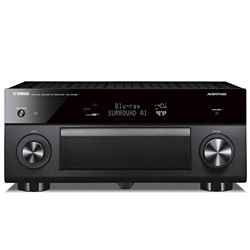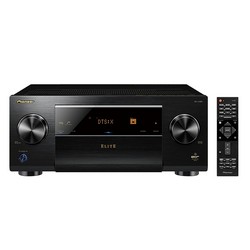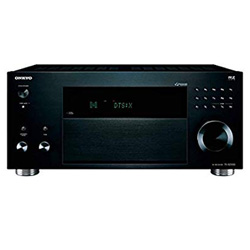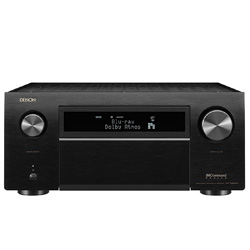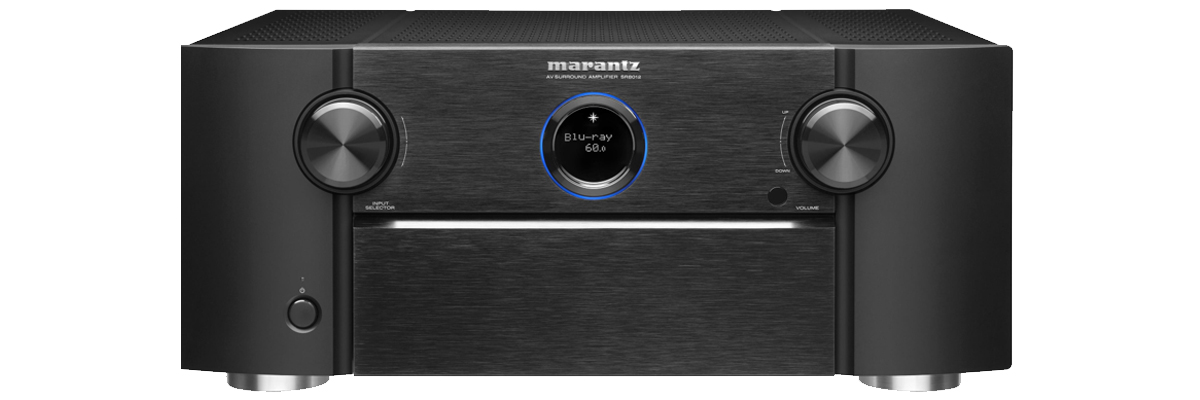 Experience the pinnacle of Marantz excellence with the new flagship SR8012, the company's first 11.2-channel receiver that sets new standards. Immerse yourself in immersive surround sound with Dolby Atmos, DTS: X and Auro 3D, all three codecs are capable of controlling the top speakers for true 3D sound. More Marantz SR8012 specs in this Marantz SR8012 review.
Experience the pinnacle of Marantz excellence with the new flagship SR8012, the company's first 11.2-channel receiver that sets new standards. Immerse yourself in immersive surround sound with Dolby Atmos, DTS: X and Auro 3D, all three codecs are capable of controlling the top speakers for true 3D sound. More Marantz SR8012 specs in this Marantz SR8012 review.
Marantz SR8012 review
Features
The new 11.2-channel flagship Marantz SR8012 can decode any modern AV-formats, has impressive functionality and offers high quality sound. The model is based on technical solutions used in reference two-channel amplifiers. The central part of the copper-plated chassis is a massive shielded toroidal transformer. High quality upscale components also help maintain the sound quality. In each channel, a discrete HDAM amplifier module with current feedback is installed, and high-capacitance capacitors are used in the PSU. As a result, the receiver produces 205 watts per channel at 6 ohms.
Design and build
The SR8012 utilizes Marantz’s advanced comprehensive sound tuning, which builds on the features of the Reference dual-channel models, including a copper chassis and a large shielded toroidal transformer built to Marantz specifications, as well as high-power capacitors for the main power supply, also designed to meet the high technical requirements of engineers Marantz.

Connectivity
The Marantz SR8012 model received eight HDMI inputs (one on the front), which support 4K / 60 Hz resolution, HDCP 2.2, BT.2020 protocol, transmit HDR video, HLG (HDR version for broadcasts) and Dolby Vision. There are three HDMI outputs, one of which works with eARC (extended return channel), which allows you to broadcast Dolby Atmos, DTS: X and other 3D audio formats. You can also select a group of digital inputs, the input of the MM phono stage, 7.1-channel input and 11.2-channel Pre Out. There are twelve pairs of screw terminals for connecting speakers.
Setup
The flagship can be integrated into the flexible multi-room HEOS system, which opens up great opportunities in terms of wireless data transfer. A special HEOS application can control the receiver and transfer audio content of the local network and other sources to components capable of working with this technology.
Pros and Cons
Pros
- The sound and build quality of this receiver is top notch
- The set up was pretty easy and the speaker microphone was a nice touch
Cons
- I didn’t like Airplay interface
Common features
Product
Model
Brand
Reviews
Amplifier
Channels
Stereo power (RMS), W/Ohm
Output impedance, Ohm
Frequency response
THD in stereo, %
Audio features
Digital to analog converter (DAC)
Bi-amping
Pure direct (straight)
Auto speaker calibration
Speaker A/B switching
Other audio features
Connectivity
Wi-Fi
USB
Bluetooth
Ethernet (RJ45)
DLNA
MHL
Streaming services
Apple Music (AirPlay)
Amazon Music
Spotify
Other streaming services
Extensive connection
HDMI input/output
HDMI ARC (Audio Return Channel)
HDMI eARC (Enhanced Audio Return Channel)
HDMI CEC
Digital content protection (HDCP)
Subwoofer output (LFE)
Headphone output
Optical digital input
Coaxial digital input
Composite input
Component input/output
Phono (MM) input
Front panel connectors
Multi channel preamp output
Video features
HDR (High Dynamic Range)
4K signal pass-through
8K signal pass-through
HDMI signal pass-through
3D signal pass-through
HDMI pass-through in standby mode
Video conversion
Analog to HDMI scaling
HDMI to HDMI scaling
Dolby Vision
Other video features
Additional features
Voice control
App control
Display
Tuner
Sleep timer
Auto power off
ECO mode
Graphical user interface (GUI)
Setup assistant
Firmware update
Other additional features
Multi-room
Multi-room zones
Zone audio output
Zone HDMI output
Multi-room control
RS-232
Remote control input/output (IR)
DC trigger output (12V)
Multichannel surround
Dolby Atmos
Dolby TrueHD
Dolby Surround
Dolby (other)
DTS:X
DTS HD Master
DTS Virtual:X
DTS Neural:X
DTS (other)
Auro-3D
IMAX Enhanced
Multichannel stereo
Audio file formats
MP3
WMA
AAC
WAV
FLAC
ALAC
Other audio file formats
Power
Operational power consumption, W
Standby consumption, W
Removable power cord
User manual
Manual
Dimensions
Size W x H x D, cm/inches
Weight, kg/lbs
Other
Release year




